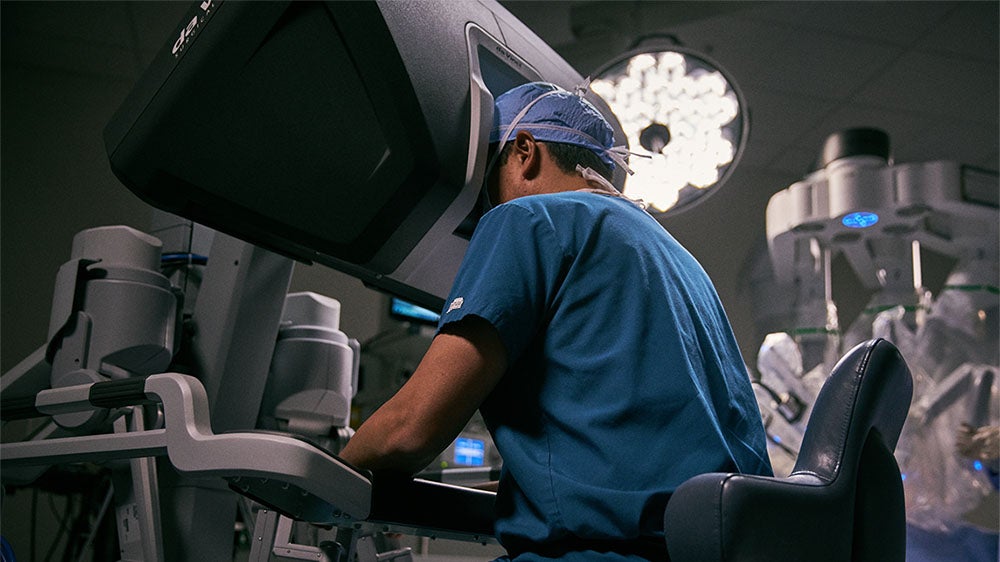da Vinci Robotic Surgery
Robotic-Assisted Surgery with da Vinci Systems
It’s fair to say that no one looks forward to surgery, but it may sometimes provide your best option for care. If you and your doctor feel that surgery is right for you, you can explore the different ways doctors can perform the surgery you need.
Traditional open surgery, where a surgeon operates with handheld instruments through a large cut (incision), may be the first method that comes to mind. However, you could also be a candidate for a less invasive approach requiring just a few small cuts, called minimally invasive surgery. Minimally invasive surgery includes laparoscopic surgery and robotic-assisted surgery.
Intuitive, a pioneer in robotic-assisted surgery and maker of da Vinci surgical systems, was founded in 1995. Today, the company continues to create and refine robotic systems, giving surgeons the added benefits of technology that helps extend their capabilities.
These pages are intended to provide patients with information about robotic-assisted surgery with da Vinci systems. It’s important to remember that Intuitive does not provide medical advice. After discussing all options with your doctor, only you and your doctor can determine whether surgery with a da Vinci system is appropriate for your situation. You should always ask your surgeon about their training, experience, and patient outcomes.

Enhancing your surgeon’s capabilities
Doctors use many technologies that enhance their capabilities beyond what the human body allows. MRI and CT scanners, for example, enable doctors to “see” inside the body. Similarly, many surgeons perform robotic-assisted surgery using a da Vinci system because it extends the capabilities of their eyes and hands.
-
Your surgeon is with you in the operating room, seated at the da Vinci system console. The console gives your surgeon control of the instruments he or she uses to perform your surgery.
-
The da Vinci vision system delivers 3D high-definition views, giving your surgeon a crystal clear view of the surgical area that is magnified 10 times to what the human eye sees.
-
Your surgeon uses tiny instruments that move like a human hand but with a far greater range of motion. The system’s built-in tremor-filtration technology helps your surgeon move each instrument with smooth precision.
Learn about da Vinci systems
More than 60,000 surgeons around the world have been trained on da Vinci systems and have completed more than 10 million surgical procedures using da Vinci systems. If your surgeon has recommended robotic-assisted surgery using da Vinci systems, be sure to ask why he or she thinks it would be a good option for you.
Find out about your procedure
Da Vinci surgical systems are cleared by applicable regulatory agencies for use in several types of surgery. Learn about the different procedures that can be performed with a da Vinci system and see information about conditions and surgical options that you may discuss with your doctor.


